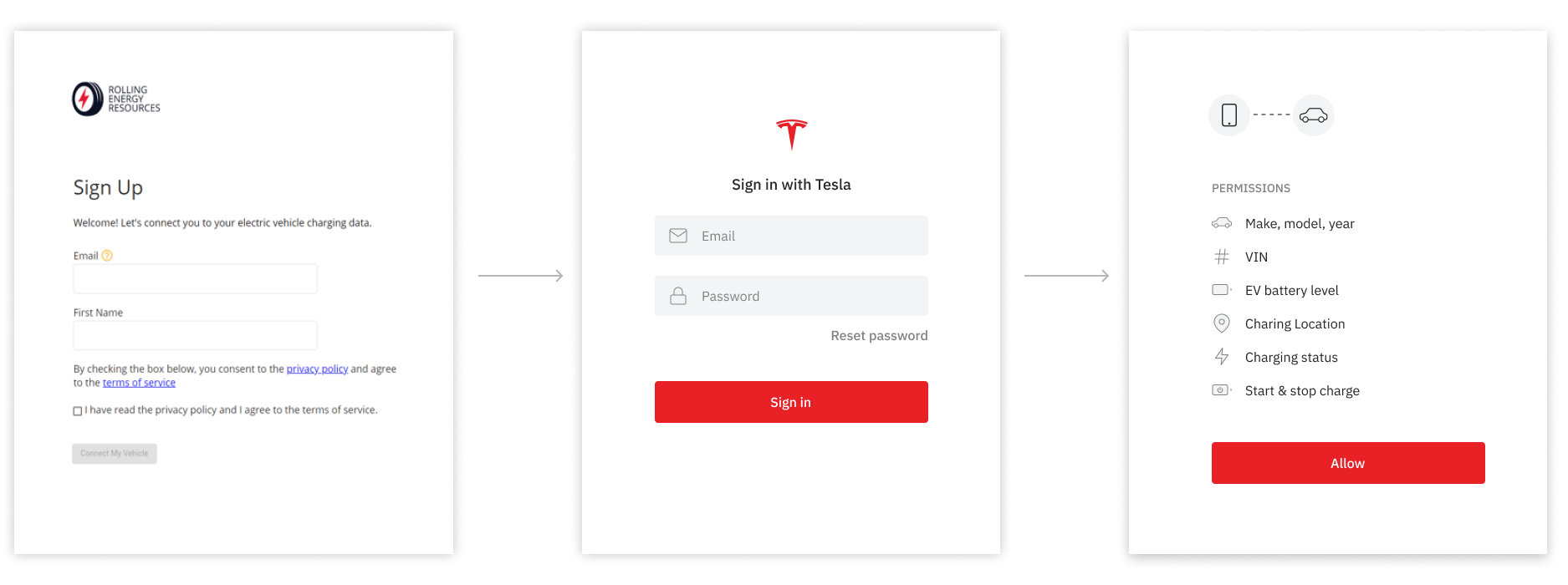Rolling Energy Resources (RER) specializes in enabling the management of EV charging through telematics-based solutions. An industry leader with extensive experience in dozens of utility programs, RER integrated with Smartcar to help utilities build an extensive library of daily charging patterns for various EV models throughout the year.
The need for managed EV charging couldn’t be timelier.
Electricity demand fluctuates throughout the day, typically peaking in the early evening. If more EV owners charge their vehicles during peak hours, it can overwhelm electric grids and force utilities to use “dirtier” energy sources to keep up with demand.
In short, the impact of EVs on the grid largely depends on when vehicle owners charge their cars. This provides a significant opportunity for utilities to leverage load flexibility for strengthening grids without costly distribution upgrades or having to build new power plans.
“Studies show that managing EV charging in an intelligent manner can save nearly 70% of the costs of new utility grid infrastructure, literally saving tens of billions of dollars,” said Bill LeBlanc, Chief Catalyst at Rolling Energy Resources.
Utilities need to manage EV charging at scale
Managed charging is critical to help utilities accomplish two big goals: Delaying EV charging to avoid peak hours and keeping electricity rates as low as possible.
This is where Rolling Energy Resources comes in.
Rolling Energy Resources was founded by energy efficiency and demand response experts in Colorado who have worked extensively with building technologies and utility programs. Through their work with smart thermostats and demand response programs, these experts realized that connected electric vehicles (EV) could also provide a similar benefit for the electric grid. After overwhelmingly positive feedback from utilities, Scott Dimetrosky and Dr. Jon Koliner formed RER to focus solely on managing the electric load of EV charging.
RER has a base of 15 utility programs that provide demand response, time-of-use assistance, EV monitoring services, and accurate EV load shapes to utilities in the US and Canada. With the help of Smartcar’s data, RER partners with utilities across 16 states in the US, giving it one of the largest geographic footprints of any load management company in the country.
Smartcar gives us the peace of mind that a team of developers is working to maintain our access to EVs. This allows us to focus on our true value-add — effectively integrating EVs into the electric grid.
— Scott Dimetrosky, CEO and Co-Founder of Rolling Energy Resources
Smartcar helps RER balance the grid
Utilities use various methods to manage EV charging loads but are becoming increasingly inclined to use telematics-based managed charging instead of controlling charging sessions through Electric Vehicle Service Equipment (EVSE) chargers. This is because:
- EV chargers require higher upfront installation costs for the charger itself and the corresponding electrical work that ensures households and EVs are safe during charging.
- EV chargers cannot give utilities important information like the vehicle’s state of charge, which is essential data for demand response programs.
“We estimate that utilities using behavioral telematics programs will get 10 to 20 times more customers to participate due to the ease of registration and elimination of special in-home equipment,” said Bill.
The Smartcar's EV API gives RER a hardware-free solution to obtain data like the state of battery charge, miles driven, charging speed, and where the vehicle is charging.
RER uses this data to build a collection of typical daily charging patterns throughout the year — a load-shape library — to help utilities conduct more accurate forecasts and system planning for the grid. It also helps RER develop its MyCharge reports, which tell drivers how much they save compared to driving an equivalent gas vehicle.
“Smartcar lays the groundwork for RER to create actionable EV load research (when people charge, where they charge, and how much energy they consume), as well as behavioral load control and active load control interventions,” said Katie Parkinson, VP of Utility Services at RER.
The results
Dedicated technical expertise is required to consistently build more vehicle integrations and keep up with the boom in EV models and brands. With the Smartcar API, RER can use a single integration to access the data they need to power their proprietary algorithms and analysis techniques.
“Connecting to all of the various electric vehicles on the market would have been a major effort,” said Scott Dimetrosky, CEO and Co-Founder of Rolling Energy Resources. “Smartcar gave us immediate access to a broad range of EV makes and models.”

Smartcar does the heavy lifting of connecting to the vehicles themselves in a reliable and consistent manner. This is difficult work, especially since the EV market changes quickly. We are happy that Smartcar can focus on those essential elements of the equation, and RER can solve the utility problems.
— Bill LeBlanc, Chief Catalyst at Rolling Energy Resources
In total, RER uses Smartcar’s odometer, state of charge, location, and charging status endpoints for EV research or load management programs. Utilities and project sponsors can view, in real-time, the charging load, location, and other characteristics of their EV-driving customers registered on the RER platform.
As the US continues to test various designs of managed charging and pricing programs, the RER and Smartcar partnership will help utilities get the data they need to evaluate different programs and present the best forward-looking options to regulators.
Want to learn more about EV load management through onboard telematics? Visit Rolling Energy Resources if you’d like to request a demonstration or explore a potential pilot program.
Vehicle brands, logos, and model names belong to their respective trademark holders and do not indicate endorsement of or affiliation with Smartcar or Rolling Energy Resources.




.jpg)

